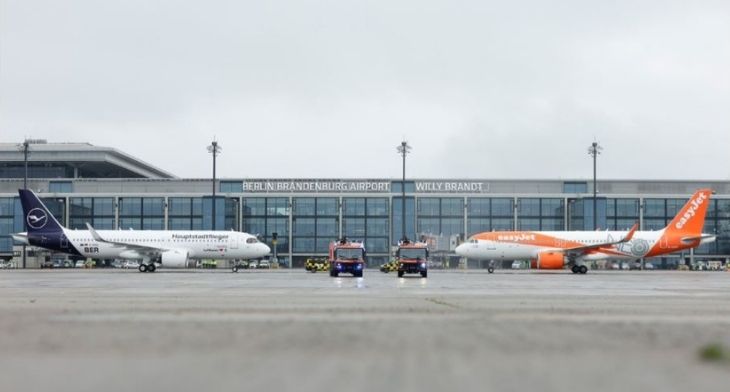


Nearly a decade behind its original schedule Germany’s Berlin Brandenburg Willy Brandt Airport finally opened on 31 October. The opening was marked by the arrival of an easyJet aircraft and a Lufthansa aircraft.
The airport, which came in some €4 billion over budget, has been beleaguered by multiple setbacks and complaints but finally opened amid a global pandemic that’s crippling the aviation industry with Germany currently in its second lockdown.
Located in the Schönefeld region southeast of Berlin, the 1,470-hectare site has been billed as a state-of-the-art air transport hub that will enable greater connectivity particularly for long-haul destinations. The airport’s new Terminal 1 and Terminal 2 terminals are located between two parallel runways, which can be operated independently of each other. Terminal 5, the former Schönefeld Airport, is located in the northern area and is expected to remain home to the low-cost carrier, Ryanair.
The new airport features 33,000 sq.m. of concrete and 9,000 tonnes of structural steel. The new Terminal 1 has a gross floor area of 360,000 sq.m. and is at the heart of the new airport.
Berlin Brandenburg Willy Brandt will replace the old Tegel airport in former West Berlin, which is due to close within a week. The airport was originally planned to be a major hub airport to rival the likes of Frankfurt, London Heathrow and Paris Charles de Gaulle, but so far the services on offer are dominated by low-cost carriers, including easyJet and Ryanair, with Lufthansa’s budget subsidiary, Eurowings, flying point-to-point within Europe.
Speaking at the opening, Engelbert Lütke Daldrup, CEO, Flughafen Berlin Brandeburg, said: “Finally we have an up-to-date airport – a gateway to the world.” He cited the excellent transport links from the airport, including rail connectivity to the city and across Germany and he said the new airport offers a modern, energy efficient building. Referencing the airport’s opening amid a global pandemic he commented, “We want to make a contribution to boost the local economy following the COVID-19 pandemic. We will work hard to boost connectivity by attracting new carriers and increasing services from the airport.”





